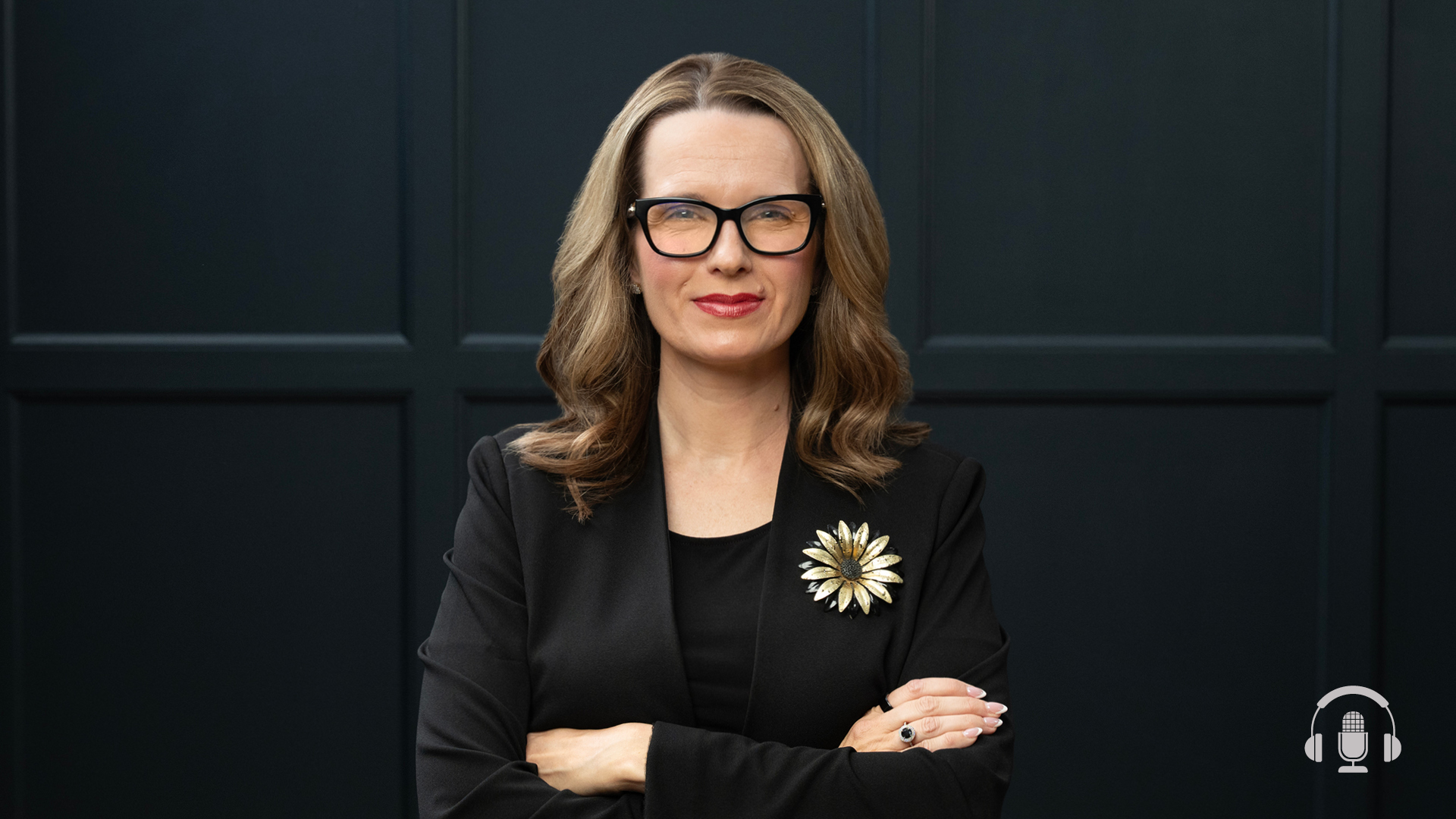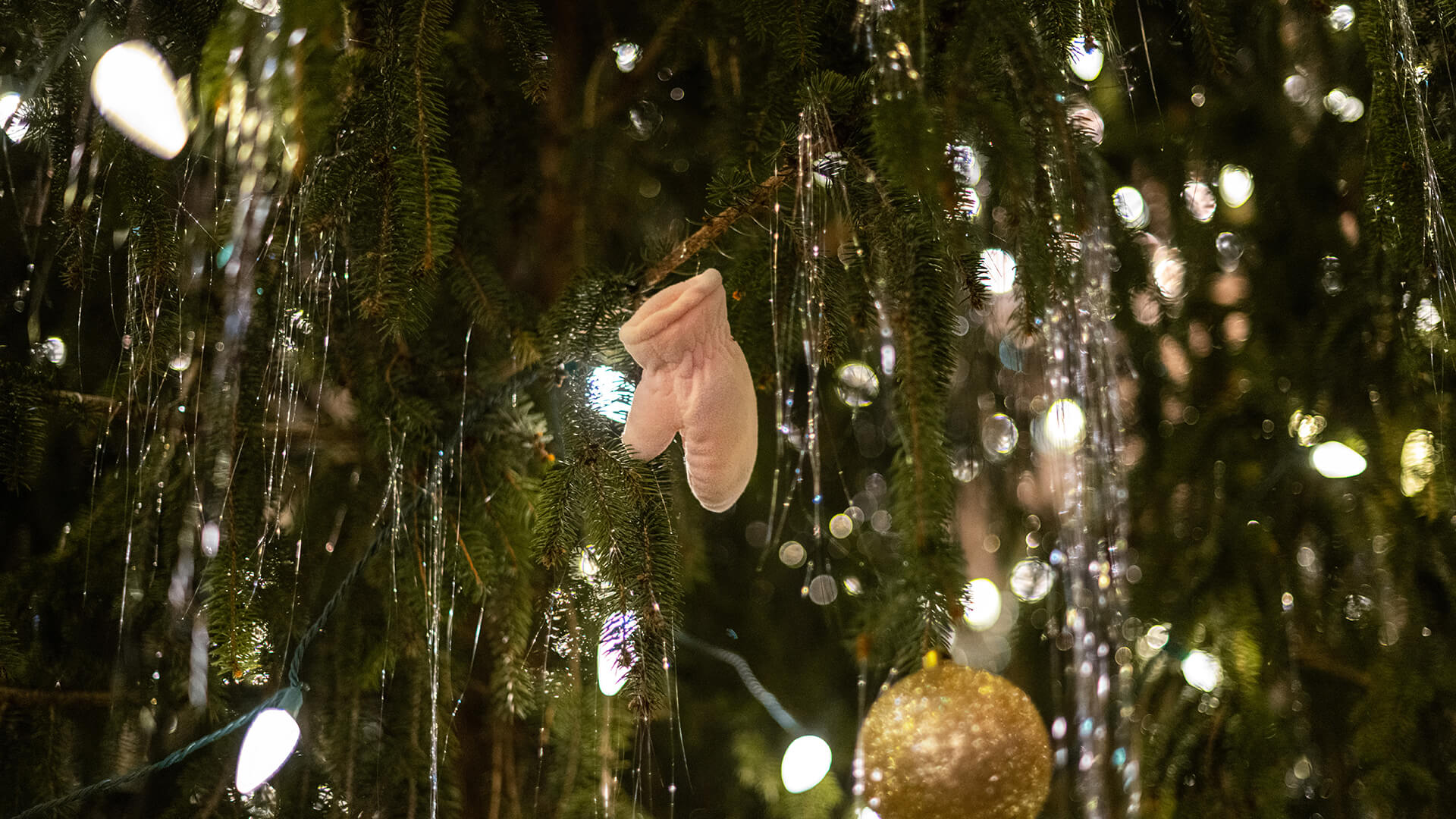An American legacy with Boilermaker roots
Seeds planted by civil rights trailblazers Winifred and Frieda Parker still growing today, tomorrow
During the early stages of the American civil rights movement and well before the landmark Brown v. Board of Education decision, sisters Winifred and Frieda Parker were leading the effort to integrate student housing on Purdue’s campus and across Indiana. On Sunday (Oct. 3), the Parker sisters were honored for their courageous leadership with the dedication of two residence halls in their names on the Purdue University campus.
The dedication ceremony, which included hundreds of supporters and members of the Parker family, was the formal celebration of the Purdue Board of Trustees’ June 2021 unanimous vote to name the residence halls after the Parker sisters. When Winifred and Frieda were admitted to Purdue in 1946, Black students were denied access to housing in West Lafayette, which included Purdue’s campus.
While their father conducted a campaign encouraging Purdue to modify its policies, the sisters courageously paved the way for their peers and future generations of Black students on campus.
Winifred Parker and Frieda Parker Halls — the first buildings on campus named for Black alumnae — stand as reminders to all students of the courageous steps it takes to make meaningful change. The buildings, and the tree planted during their dedication, represent more than a single heroic moment in time; rather, they are the latest manifestation of one family’s ongoing pursuit for and celebration of the power of equitable, accessible education.
“This tree, a dawn redwood, will become tall and strong just as Winifred Parker White and Frieda Parker-Jefferson grew and became strong leaders throughout their lives,” John Gates, Purdue’s vice provost for diversity and inclusion, told the audience. “This tree will make the living experience on our campus more beautiful for generations to come and remind those who stop and gaze at its beauty of two young women who are forever linked to the great ongoing story of Purdue.”
Alongside the Black Cultural Center at the corner of Third and North Russell streets, the tree and residence halls are reminders that a legacy like the Parkers’ is not the result of one moment or one action. Though based on a single, core principle — that education should be available, accessible and equitable — the Parker’s actions became a legacy when Winifred, Frieda and their family chose to stand by that principle, in the face of adversity, each day of their lives.
By choosing to persistently pursue their values, the Parker family demonstrates how single steps made again and again and again can act as seeds of change that continue to grow for generations.
Today, student employees working in the two Parker Halls boast a slogan that represents Winifred and Frieda well: “Pioneers in their own way. Boilermakers in every way.” After graduation, the sisters went on to live rich lives as educators, scientists and advocates. The Parkers and their families remained vocal Purdue loyalists long after graduation. Their story is featured in the 2009 documentary, “Black Purdue,” as well as “A Force for Change: The Class of 1950,” by historian John Norberg. Now, archival exhibits in the Parker Halls will share their story to new audiences.
“Like Neil Armstrong or Amelia Earhart, Winifred and Frieda Parker are heroic Purdue icons, and it’s my hope that these facilities and the exhibits within them will help amplify their role in the American story,” says Renee Thomas, Purdue’s associate vice provost for diversity and inclusion.
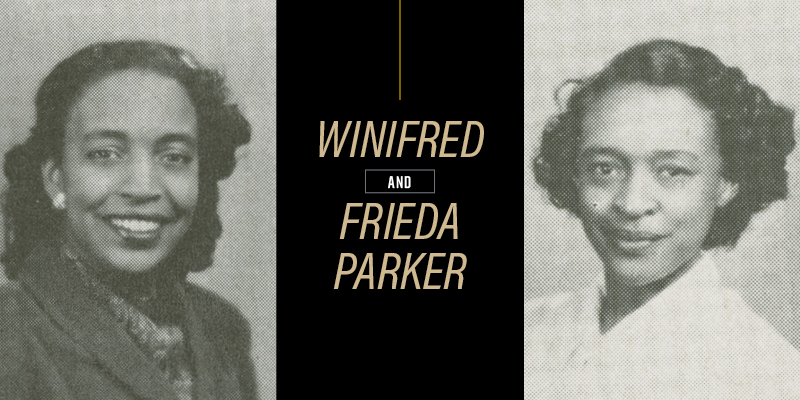
The great equalizer
The Parkers’ legacy as changemakers began with Winifred and Frieda’s father, Frederick. During the early part of the twentieth century, Fred was one of several distinguished Black men recruited to attend Amherst College, an elite liberal arts college in Massachusetts.
“Selected to be educated amongst the most elite individuals from across the nation, my grandfather realized that education was the great equalizer,” says Adrienne White-Faines, daughter of Winifred Parker White. “He believed that when you are in the classroom, learning together, taking the same exams, it’s beyond your skin color, beyond your story and beyond your history.”
To his core, Fred believed in the power of education. As a teacher and principal at Crispus Attucks High School in Indianapolis, he is known for having instilled high academic expectations and cultural pride in his students, laying solid foundations for their aspirations of becoming doctors, lawyers, educators, artists and more. Fred Parker received the Harvard Award for Outstanding Teaching in 1970 and an honorary doctorate from Amherst College in 1973.
“Because of his opportunities and experiences, my grandfather dedicated his life to helping thousands of Black men and women gain access to and receive degrees in higher education,” White-Faines says. “He changed the trajectory of lives and families for generations.”
As firsthand recipients of this lesson, White-Faines says, there was no question that Winifred and Frieda would go to college.
After being admitted to Purdue in 1946, the sisters arrived on a campus still learning how to provide accessible and equitable education for all. Years before the landmark decision of Brown v. Board of Education, which legally established the principle that separate accommodations could not offer equal opportunities, students of color were forbidden from living in West Lafayette, which included campus.
“My grandfather recognized that education in itself happens in a variety of environments,” White-Faines says. “Education happens in the classroom. Education happens in the dining hall. Education happens in the dorm room. Education happens because you come together to hear perspectives and learn.”
Education happens in the classroom. Education happens in the dining hall. Education happens in the dorm room. Education happens because you come together to hear perspectives and learn.
Adrienne white-faines
daughter of winifred parker White
“Black students, therefore, were being admitted into Purdue, but yet they weren’t.”
In the face of policy-supported segregation, adversity and prejudice, Purdue’s Black students bolstered their academic success by tapping into their shared strength and resiliency.
“Many, many Black students, in order to survive, relied on their own internal culture and community,” White-Faines says. “And it was those communities that allowed you to make it through. Those were your friends. They were how you were affirmed. They helped you find your strength to put on your coat, if you will, and go out into this environment to earn your education, understanding that you were navigating a very dynamic world of acceptance.”
No matter the strength of their support system, without full acceptance into the residential campus experience, the Parkers and their peers faced systemic barriers that prevented them from receiving the full potential of their education. In the rural Midwest of the 1940s, many basic services — including haircuts and restaurants — were not open to Black Americans in West Lafayette.
“Imagine being a student, having to study, to do your work, then to travel all the way across the bridge into downtown Lafayette to get home, often by foot — they didn’t have access to the transportation services we have today,” Thomas says.
“We’re not just talking about missing social events, which anyone would recognize as an important part of the residential college experience,” Thomas says. “Every basic need required a commute — getting a haircut, going to sleep at night, finding a place to eat. That takes an enormous amount of time and energy.”
Segregation denied Black students access to the most essential aspects of a quality education, making their college experience very different from that of today’s students.
The right women for the job
Convinced that Winifred, Frieda and their peers were not receiving the education he envisioned for them, Fred Parker and his family started a campaign on two fronts: As Fred began petitioning state and university leadership for integrated housing, Winifred and Frieda continued creating bridges on campus.
“He made it well known that Purdue was a land-grant school supported by state taxes, and his taxes supported the school just like everyone else’s. So why couldn’t his children live on campus?” Frieda Parker wrote of her father in her contribution to Force for Change. “The fact that Blacks were not allowed in the dorms was a policy that had been set up in the housing office at Purdue. It was not a law.”
White-Faines says, “Because of my grandfather’s confidence and courage, he was comfortable reaching out and taking the risks to say, ‘I know what equity looks like. I know what right looks like. And I’m not afraid to politely, but firmly, advocate.’ He was able to give voice not only to my mother and aunt, but to all of the Black students on the campus who were not yet allowed to live on campus or in West Lafayette.”
In January 1947, both sisters were admitted to Bunker Hill, which sat just down the block from the newly named Parker Halls. The change brought its own challenges for the newly admitted Black residents.
It was Winifred and Frieda’s turn to show confidence and courage.
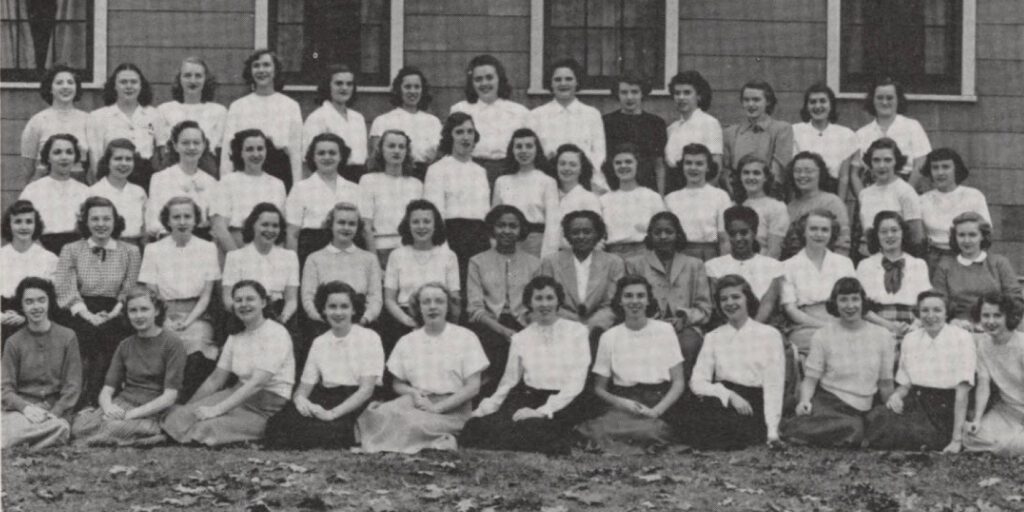
“We received a letter from the dean of women who did everything she could to discourage us from coming and living on the campus short of telling us how much happier we would be and how the people wouldn’t speak to us and, you know, the same old thing all the time,” Frieda says in the documentary, “Black Purdue.” “We didn’t believe them anyway.”
Asked how her mother and aunt faced their move into yet another predominantly white space, White-Faines describes women capable of setting aside their own fears, “because you need to be present for those around you.”
“The beauty is, my mother and my aunt were both incredibly warm, kind — my aunt was infectiously funny — and approachable people. You couldn’t help but like them,” she says. “I can picture my aunt’s humor breaking awkward moments, because only she could do that. And my mother could turn with her empathetic and compassionate self and make people warm up to new things.”
It wasn’t only the Parkers and their peers who were treading new water. As the first Black residents of Bunker Hill, the Parkers bore the burden of making their white peers comfortable with the situation.
“What Purdue did by integrating the dorms was to open a whole different world, not just for Black people, but for all the white women who were living in their dorms,” White-Faines says. “It demystified the idea of Black women. They could walk away going, ‘They brush their teeth just like I do. They laugh in the room just like I do. They can be friends. I can see them as people.’”
“Access is not just about making a way for Black people. It’s making a way for the world to appreciate the diversity that exists within all of us, so we can all grow. We all suffer when that is denied,” she says. “Those were not easy days, lots of challenges, but they were the right women to do it.”
The Parker family’s legacy did not end with their class, with Black students, or even with Purdue. Friends with civil rights giants such as Charles Hamilton Houston, dean of Howard Law School and a founder of the National Bar Association, Fred Parker was connected to a number of individuals bringing forth litigation against colleges and universities across the nation for issues related to segregation and unequal access, Thomas says.
“This story really resonates with me because it provides historical context for the wonderful story that Purdue University has as it relates to the African American community. Yes, it started as a fault by the institution and society, but Purdue rose to the challenge to change, and we keep moving forward,” Thomas says.
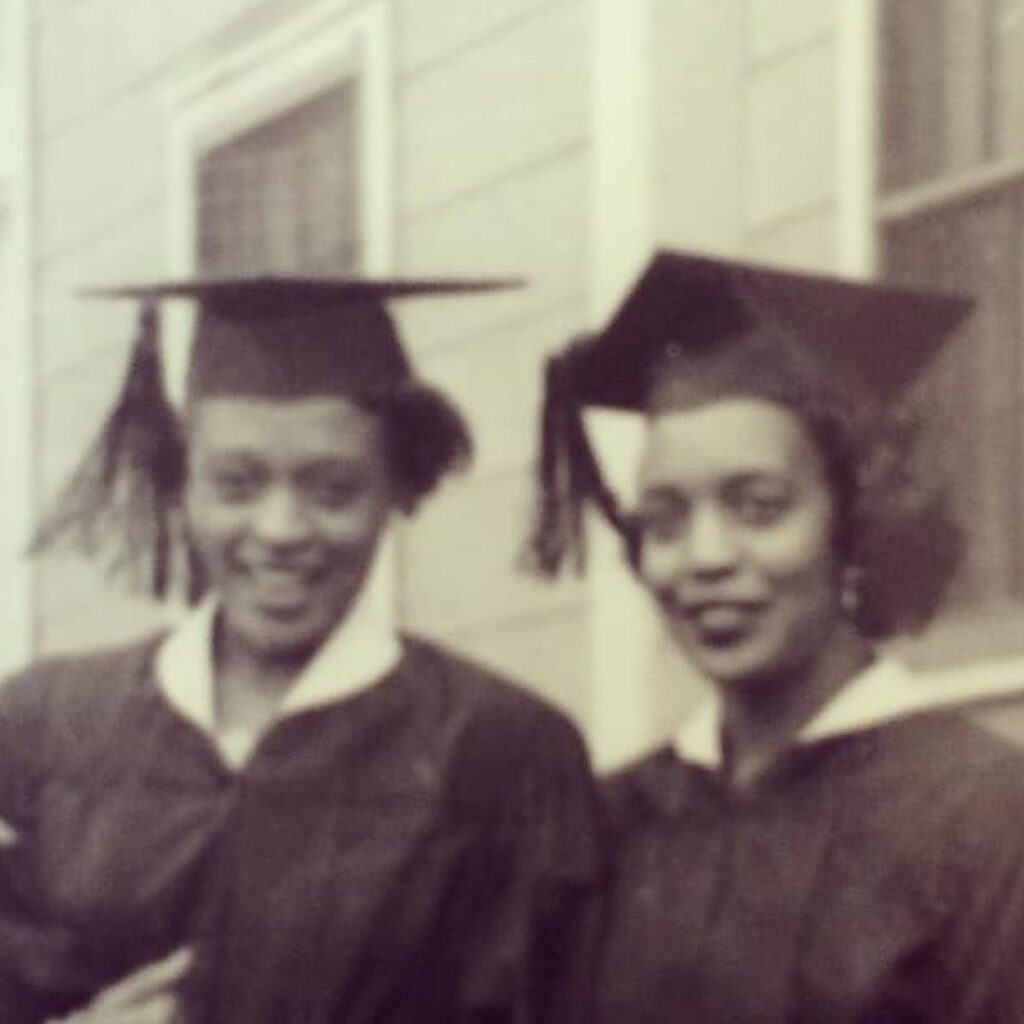
An American legacy
During Sunday’s dedication ceremony, Purdue President Mitch Daniels expressed admiration not only of the sisters, but of their family’s shared commitment to a united cause. “I love what a family story this is,” he said. “As unique as these two sisters were, you’ve just seen and I hope you already knew the story of a great American family.”
The Parkers’ story is just that – a story made of many moments, many people and many contributions. It began with Fred Parker’s belief in the value of education, carried on through the lessons he shared with others, persisted in the courageous actions of his children, and endures still in the actions taken by Purdue University in honor of the Parker family story.
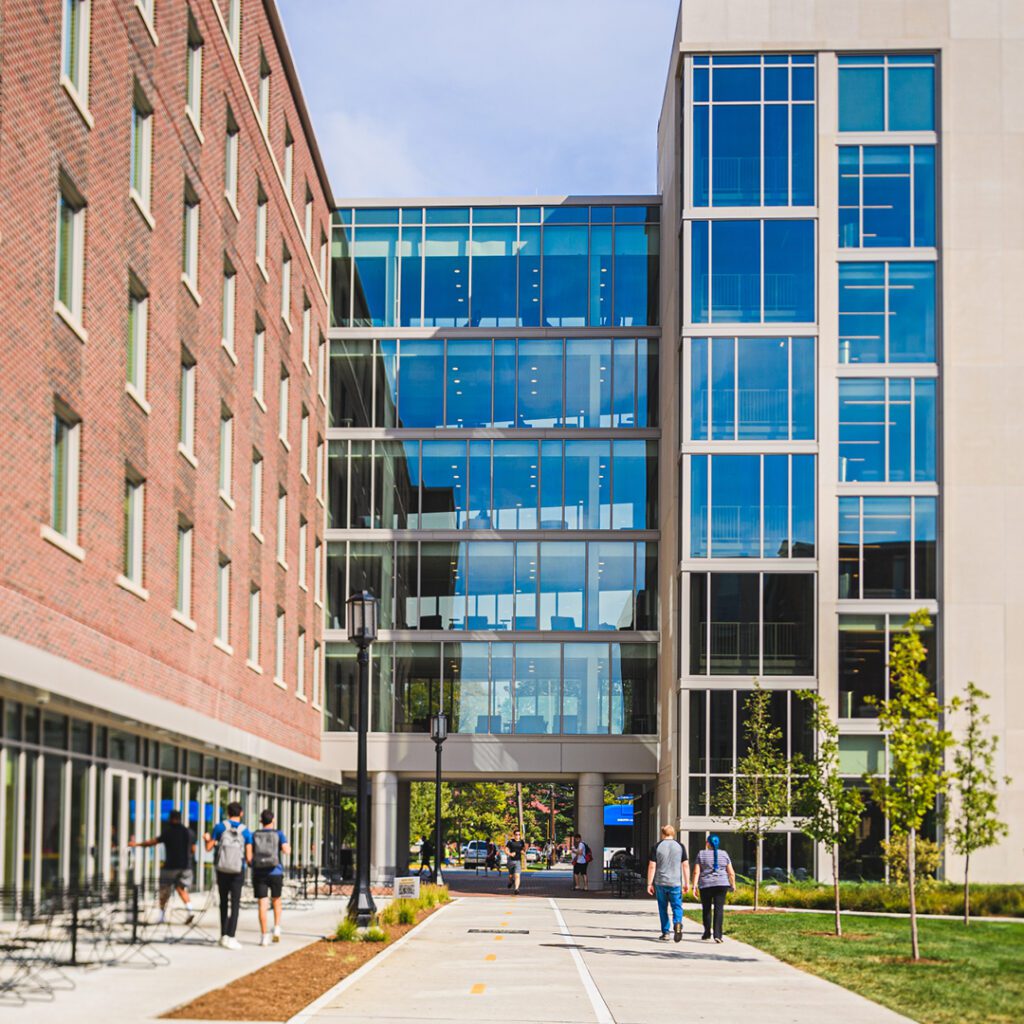
With sunshine breaking through a hazy sky, Purdue leadership took the stage to iterate the role of education in creating a just society. They took the opportunity to reaffirm Purdue’s commitment to creating equitable pathways for all.
“Education is the great lowerer of barriers, and in the knowledge economy we live in today – where there has been a lot of progress – it is still the biggest barrier to upward mobility of free people,” Daniels says. “Purdue is committed to lowering that as our contribution to a more just and more successful society for all. Affordable, accessible and equal opportunity to a Purdue education is our highest commitment.”
Last year, the Purdue Board of Trustees created the Equity Task Force, whose assessment of structural and environmental barriers to success of faculty, staff and students of color resulted in an entire strategic pillar committed to not only bettering – but excelling – at creating an environment of success for Black Boilermakers.
“Our overarching goal is for Purdue to become the first-choice institution for Black students, faculty and staff,” Gates told the crowd. “Second choice just won’t do.”
Gates also relayed the University’s commitment to double Black undergraduate enrollment and substantially increase the number of Black faculty over the next five years, citing actionable plans for new scholarships, cluster hires, mentoring programs and community-building initiatives.
“The Board of Trustees has committed to a goal of $75 million during the next five years to support this initiative,” Gates says. “Seventy-five million dollars is one of the largest sums of any public university in the United States for such a cause. That’s our Purdue. Purdue is at a defining moment in creating a future for Blacks at this university that will be a model for other universities to follow – and we will succeed.”
“My mother, Winifred, and my aunt, Frieda, came to Purdue with the clear and unwavering goal to pursue and receive their bachelor degrees as their parents had instilled in them that education is the great equalizer,” remarked White-Faines at the dedication event. “At the time and still today, it’s understood that likely the strongest and most efficient and effective pathway to a more just and peaceful world is through education.”




